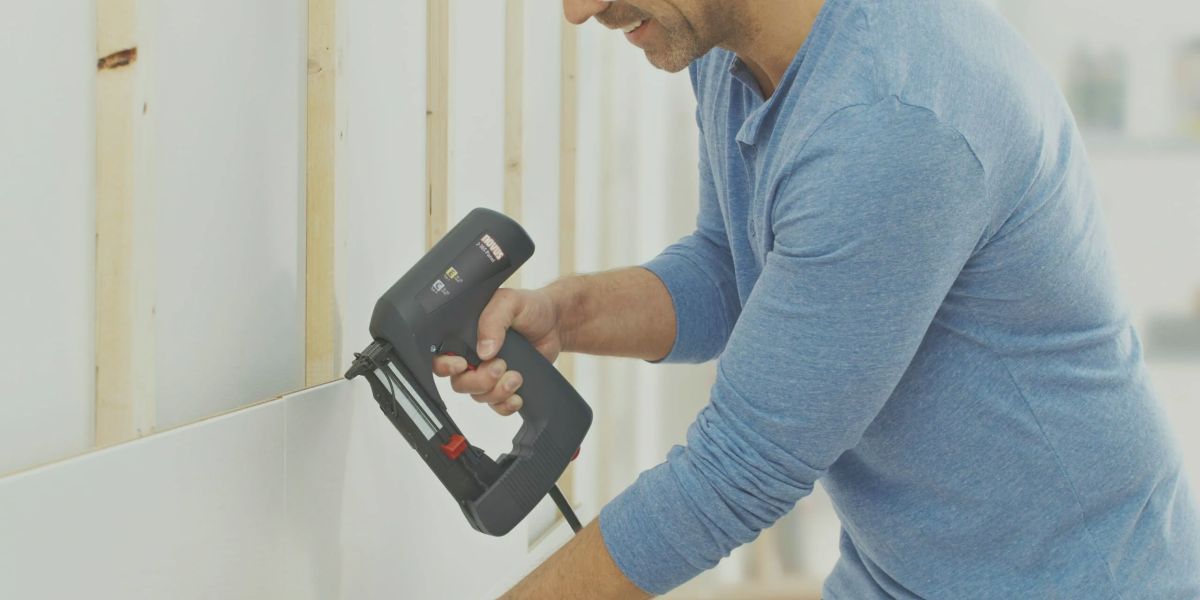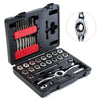
The Best Electric Tackers for DIY Projects
This comprehensive guide will provide you with all the information you need to choose the best electric tacker for your DIY projects, from beginner to expert level.
Table of Contents
- Introduction
- Types of Electric Tackers
- Features to Consider in an Electric Tacker
- Top Electric Tackers on the Market
- How to Choose the Right Electric Tacker for Your DIY Projects
- Tips for Using Electric Tackers Safely and Effectively
- Maintaining Your Electric Tacker
- Conclusion
Introduction
Electric tackers are indispensable tools for DIY enthusiasts, hobbyists, and professionals alike. They make tasks such as upholstery, woodworking, carpeting, and other home improvement projects much easier and efficient.
Types of Electric Tackers
There are two primary types of electric tackers: corded and cordless. Let's explore the advantages and disadvantages of each type:
Corded Electric Tackers
- Advantages: Corded electric tackers typically offer more power and consistent performance compared to their cordless counterparts. They are ideal for heavy-duty tasks and prolonged use since they don't rely on batteries.
- Disadvantages: The main downside of corded electric tackers is that you need access to a power outlet, which may limit mobility and make them less convenient for some projects.
Cordless Electric Tackers
- Advantages: Cordless electric tackers provide greater mobility and convenience, as you don't need to be near a power outlet. They are perfect for tasks that require maneuverability and flexibility.
- Disadvantages: Cordless models usually have less power than corded ones and may require frequent battery replacements or recharging, especially during extended use.
Features to Consider in an Electric Tacker
When shopping for an electric tacker, keep the following features in mind:
- Power Source: As mentioned earlier, you can choose between corded and cordless models based on your specific needs and preferences.
- Staple Size and Compatibility: Ensure the electric tacker can accommodate the staple size and type required for your projects. Some tackers are compatible with brad nails as well, offering additional versatility.
- Adjustable Firing Speed: This feature allows you to control the speed at which staples are fired, enabling a more precise and controlled application.
- Depth Adjustment: An adjustable depth setting enables you to control how deep the staples are driven into the material, which is useful for different materials and project requirements.
- Anti-Jam Mechanism: A reliable anti-jam mechanism ensures smooth operation and reduces downtime due to staple jams.
- Ergonomic Design: A comfortable grip and well-balanced design reduce hand fatigue during extended use.
Top Electric Tackers on the Market
Here are some examples of popular electric tackers suitable for various DIY projects:
- Arrow Fastener T50ACD: This corded electric tacker is ideal for light to medium-duty tasks, featuring a compact design, consistent power, and compatibility with T50 staples.
- Stanley TRE550Z: This versatile corded model is compatible with both staples and brad nails, making it suitable for a wide range of projects. It offers dual power settings for different materials and has an anti-jam mechanism.
- DeWalt DCN701B: This cordless electric tacker is designed for professionals, offering exceptional battery life, a brushless motor for enhanced durability, and compatibility with DeWalt's XR battery platform.
- Ryobi P317: This affordable cordless option is compatible with the Ryobi ONE+ battery system and offers a robust design, adjustable depth control, and compatibility with both staples and brad nails.
- EcoElectronix Electric Stapler: This electric stapler is designed with an ergonomic handle and adjustable power settings, making it perfect for extended use. It also features a jam-free design and easy-to-load magazine, making it ideal for high-volume stapling tasks.
- Bostitch Electric Stapler: This electric stapler is designed with an ergonomic handle and adjustable power settings, making it perfect for extended use. It also features a jam-free design and easy-to-load magazine, making it ideal for high-volume stapling tasks.
- Craftinova Electric Stapler: This electric stapler is designed to tackle any job you throw at it, from upholstery to crafts to general office work. It has an adjustable depth guide and anti-jam technology that make sure your staples are always perfectly placed and secure.
- Maestri ME 3G Electric Stapler: This heavy duty electric stapler is built to last through even the toughest jobs with its all metal construction and durable design. It also features a quick release mechanism that makes reloading staples a breeze, as well as an adjustable power setting that allows you to customize your staple size according to your needs
How to Choose the Right Electric Tacker for Your DIY Projects
When selecting an electric tacker for your DIY projects, consider the following factors:
- Type of Projects: Assess the types of projects you plan to undertake. Light-duty tasks like upholstery may require a less powerful tacker, while heavy-duty projects like woodworking may necessitate a more robust model.
- Frequency of Use: If you plan to use the electric tacker frequently, opt for a high-quality model with durable components and ergonomic design to minimize hand fatigue.
- Budget: Determine your budget beforehand and choose a model that offers the best combination of features and value within your price range.
Tips for Using Electric Tackers Safely and Effectively
Follow these guidelines to ensure safe and efficient use of your electric tacker:
- Read the Manual: Familiarize yourself with the electric tacker's features, operation, and safety precautions by thoroughly reading the user manual.
- Wear Protective Gear: Always wear safety glasses and gloves when operating an electric tacker to protect your eyes and hands from potential injuries.
- Test on Scrap Material: Before starting your project, test the electric tacker on a scrap piece of material to ensure proper staple depth and firing speed.
- Keep a Firm Grip: Hold the electric tacker firmly with both hands to maintain control and prevent accidental misfires.
- Disconnect When Not in Use: Unplug corded models or remove the battery from cordless models when not in use to prevent accidental activation.
Related Article: How to Use a Manual Hand Tacker
Maintaining Your Electric Tacker
Proper maintenance is essential to prolong the life of your electric tacker and ensure optimal performance. Here's how to keep your electric tacker in top condition:
- Clean Regularly: After each use, clean the electric tacker with a soft brush or cloth to remove dust and debris from the exterior and magazine.
- Inspect for Wear: Periodically inspect your electric tacker for signs of wear or damage, paying close attention to the power cord, trigger, and magazine.
- Lubricate Moving Parts: Lubricate moving parts such as the magazine and firing mechanism with a light machine oil to ensure smooth operation and reduce friction.
- Replace Worn Components: If you notice any damaged or worn components, replace them promptly to prevent further damage and maintain optimal performance.
Conclusion
In conclusion, choosing the best electric tacker for your DIY projects involves considering factors such as the type of projects, frequency of use, and budget.
By carefully assessing your needs and comparing different models on the market, you can find the perfect electric tacker that will make your DIY tasks easier, more efficient, and enjoyable.
Remember to always follow safety precautions and maintain your electric tacker properly to ensure its longevity and optimal performance. Happy DIY-ing!



